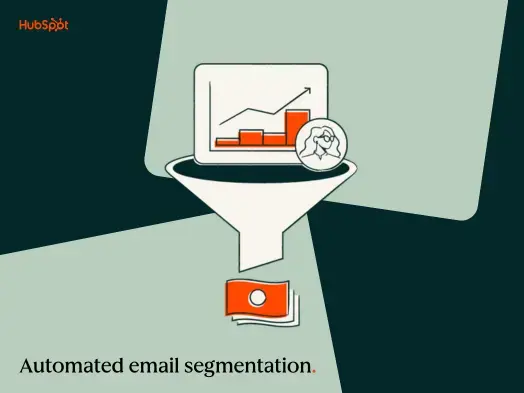Knowing how satisfied your customers are is crucial for your business’s success.
Unfortunately, many brands ignore customer feedback, which can lead to lost sales and a bad reputation. The answer? Actively monitor customer satisfaction to take meaningful action.
Steps to measure customer satisfaction
- Set milestones and goals
- Choose adequate survey metrics
- Outline the customer satisfaction survey
- Decide on delivery methods
- Post-engagement survey
- Analyze survey findings
- Apply, rinse, and repeat
Dissatisfied customers can quickly switch to competitors if they’re unhappy with your marketing, services, or shipping. Customer success tools can help you manage these relationships and address issues before they grow.
On the flip side, happy customers are likely to return and recommend your brand to others. Customer satisfaction surveys are essential for understanding their feelings. By using effective survey tools, you can measure how well you meet customer expectations and collect valuable feedback.
Benefits of measuring customer satisfaction
Measuring customer satisfaction offers several benefits that can significantly impact a business’s success. Here are some key advantages:
- Better understanding of customer needs: Customer satisfaction metrics provide a clearer picture of what customers value most, enabling businesses to tailor their offerings and marketing strategies more effectively.
- Enhanced product or service development: Feedback from customer satisfaction surveys provides valuable insights into what customers like or dislike about your offerings. This information can guide product development and service enhancements to better meet customer needs.
- Improved customer retention: Understanding customer satisfaction helps identify areas for refinement, which can improve customer experience and retention. Satisfied customers are more likely to return and make repeat purchases.
- Informed decision-making: Data collected from customer satisfaction assessments can guide strategic decisions, from operational changes to marketing campaigns, ensuring they are aligned with customer expectations.
- Reduced customer churn: By identifying dissatisfied customers early through satisfaction measurement, businesses can take proactive steps to address issues, reducing the likelihood of customers leaving.
- Enhanced brand reputation: Consistently measuring and improving customer satisfaction can enhance a brand’s reputation, leading to greater trust and credibility in the marketplace.
- Benchmarking: Regularly measuring customer satisfaction allows businesses to track their performance over time and establish benchmarks for future comparisons, enabling continuous improvement.
Steps for measuring customer satisfaction
In order to create a successful survey, consider the following points to include.
1. Set milestones and goals
Before you create a customer satisfaction survey, set some milestones and goals for your campaign. Creating a survey without Key Performance Indicators (KPIs) can negatively affect its outcome.
Review your company’s current state, including customer support, social media engagement, product and service portfolio quality, and public reputation.
Be aware of the up-to-date image your brand and products enjoy on the market before asking your customers what they think about you. This will give you an edge in terms of creating more relevant questions for them to express their thoughts through, as well as ensure that you avoid any unpleasant surprises in the results you receive.
Once that’s done, you can set deadlines for your customers to respond by, after which you will draw a proverbial line and close the polls out for data analysis (more on that later).
2. Choose adequate survey metrics
There are different methods available when it comes to measuring overall customer satisfaction. Different surveys target different elements and goals when it comes to the customer base’s response. You can take a look at your company’s online reviews across the web in order to get a better understanding of which survey type to use.
Let’s take a look at some in order to get a better understanding of the methodology available to you:
Net promoter score (NPS)
NPS relates to whether or not an existing customer would recommend your brand to a friend or an acquaintance. On a scale of one to 10 (Detractor to Promoter), you can quickly identify the general brand image you currently enjoy. NPS questions can easily be integrated into surveys and act as a good way to check your reputation periodically when launching subsequent surveys.
NPS = Percentage of promoters − Percentage of detractors
Customer satisfaction score (CSAT)
As one of the most important customer satisfaction metrics, CSAT can be integrated in many ways. Similar to NPS, CSAT allows you to measure your customers’ satisfaction either numerically or with pre-made text answers ranging from “Bad” to “Great.”
Customer satisfaction scores can be a great way to break up the monotony of a series of questions in your survey. You can also implement CSAT in your business’s everyday corporate activities, including customer support, service functionality, product orders, etc.
CSAT = (Total number of satisfied customers / Total number of responses) × 100
If you received 100 responses to your survey and 80 customers rated their satisfaction as 4 or 5:
CSAT = (80/100) × 100 = 80%
This means 80% of customers are satisfied with their experience.
Customer effort score (CES)
CES revolves around measuring the customer’s overall UX regarding your brand.
How easy is it to use your products? Is your website simple enough to navigate and use to its fullest extent? These are the questions you should ask through a CES customer satisfaction survey in order to receive the most tangible results.
You can add a “Why” at the end of the CES questionnaire in order to get further clarification of a customer’s response if you choose to do so.
CES = Total sum of responses / Total number of responses
If you received 100 responses with the following scores: 1, 2, 5, 4, 6, 3, 5, 7, 2, 4, etc., you would sum all the scores and divide by the number of responses.
For instance, if the total score is 380,
CES = 380/100 = 3.8
Churn rate
Churn rate refers to the percentage of customers lost from your customer base over a specific period. This loss can occur for various reasons, including aging out of your target demographic, declining interest in your products or services, budget constraints, or dissatisfaction with the customer experience.
While businesses often aspire to achieve zero churn, this goal is typically unrealistic. Over time, it’s natural to lose some customers while gaining new ones. By keeping track of this rate, businesses can identify trends and develop strategies to minimize churn and enhance customer loyalty.
Churn rate = (Number of lost customers ÷ Total number of customers at the start of time period) x 100
If a company starts the month with 1,000 customers and loses 50 customers during that month:
Churn Rate = (50/1000) × 100 = 5%
This means the company has a churn rate of 5% for that month.
3. Outline the customer satisfaction survey
Know what you are looking for, and be as concrete as possible in your questions. The clearer your queries, the more useful the information you gather will be later on.
Amanda Smith, a PR Manager at Trust My Paper, says, “Customers will rarely bother with surveys filled with endless open-ended questions. Formulate multiple-choice surveys with objective answers and offer optional “what’s on your mind” fields every now and then—especially at the end of the survey.”
If you don’t have an editor on board, you can outline your customer satisfaction surveys using a platform of choice. Depending on the complexity of your survey goals, you can choose from several different platforms. Most brands use Google Forms as their go-to platform for creating an adequate survey, with WordPress survey plugins close behind.
Whichever way you choose, make sure that you know what you are looking for, and don’t expect the customers to guess.
4. Decide on delivery methods
Once you have created a customer satisfaction survey, it will be time to choose adequate delivery methods. Depending on your customer’s relationship and contact information, you can opt for one or several of the following methods.
Mailing list
Email is still very relevant in the marketing sphere. The global population has increased its email use even further in the past years. Email marketing software can be a great, unobtrusive way of delivering your customer satisfaction survey to the right audience. To incentivize engagement, you can attach discount coupons or loyalty incentives for the readers to get higher response rates.
Chatbot engagement
Company websites are often equipped with rudimentary chatbots that offer customer support and collect tangible user data in return. Your chatbots can invite customers to engage with the survey and offer their insights into how your business looks from the outside. This is a simple, effective, and welcome way of introducing customer satisfaction surveys to your customer base without stretching your professional boundaries.
Social media channels
If you don’t already have an established social media presence, you should correct that mistake in earnest. Platforms such as Facebook, Twitter, and Instagram are great for customer satisfaction assessment and customer engagement. Be mindful. However, if you choose to publish your surveys publicly for everyone to see – you might end up with false or inaccurate data as a result.
5. Post-engagement survey
You can easily introduce your customer satisfaction metrics and survey into the post-engagement phase of the customer’s journey. This means that customers can be presented with a complimentary survey after making a purchase, subscribing to your newsletter, or otherwise engaging with your website.
In this case, the survey should be as clean and unobtrusive as possible to allow the customer to continue their browsing experience. However, post-engagement surveys are a great way to collect fresh and informative data on how people engage with your services while the memory is still fresh.
6. Analyze survey findings
Once you have collected a good number of responses (based on your initial KPI and goals), you can proceed to the analysis phase. Customer satisfaction surveys can be analyzed in numerous ways depending on the type of data you’ve collected.
If the data is numeric and comprised of percentages and values, you can refer to tools such as Google Sheets to organize your findings into charts and graphs. Alternatively, written responses and open-ended questions need to be analyzed manually.
Some customers will be blunter than others, who might be more critical and objective. Pay close attention to the negative feedback you have received and try to create a network of similar instances between customers. That way, you will discover the biggest issues your customers currently share among themselves in terms of your brand and product portfolio.
7. Apply, rinse, and repeat
Once you discover what doesn’t tick in your business, you need to act on it as soon as possible. Use your delivery channels to announce a successful end to your customer satisfaction survey and that you are hard at work implementing what you’ve learned.
Depending on the feedback you receive, this notion will be especially satisfying to customers once you make drastic changes. However, even if you fix immediate issues with your products or services, they might come back at some point down the line.
Make it a habit to run customer satisfaction surveys periodically in order to get a better sense of where you are currently. That way, you will never find yourself in a situation where you are in the dark in terms of what the public thinks of your business, products, or services.
We aim to please!
A well-planned customer satisfaction survey can have transformative effects on your brand as a whole. It is one of the cheapest and most accessible ways of conducting customer research, and it is a necessary element of your continued brand marketing. Make it a vital part of your everyday stakeholder engagement, and you will always have a head start in terms of shifting trends and customer interests.
Explore effective methods to enhance and measure customer experience within your organization.
This article was originally published in 2019. It has been updated with new information.










